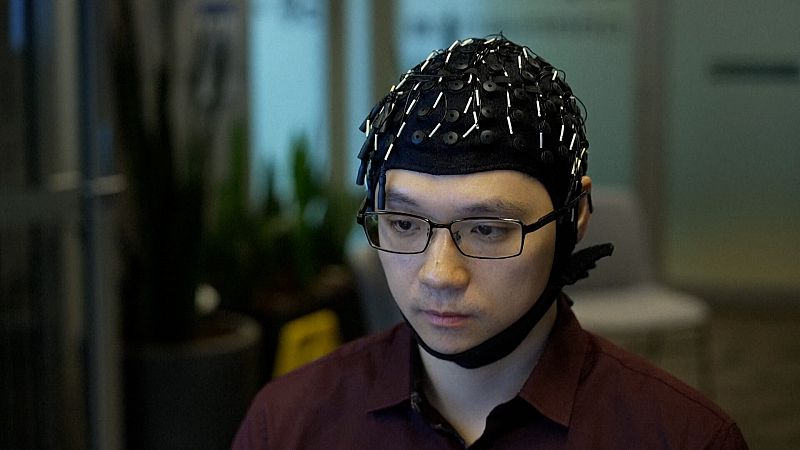The Future of Communication: Brain-Computer Interfaces and AI
Imagine being able to send a message to your loved ones without touching your phone. Instead, you could simply think about what you want to say, and the message would appear on your screen. This concept used to be confined to the realm of science fiction, but it is now becoming a tangible reality thanks to advances in artificial intelligence (AI).
Recent breakthroughs have brought the idea of connecting the human brain directly with computers closer to everyday use. While previous technologies that convert thoughts into text often required invasive methods like brain implants, new developments are changing this landscape.
A Non-Invasive Approach with AI
Scientists at the University of Technology Sydney are exploring a non-invasive method using a cap-like device that monitors brainwave activity. This AI-powered system can interpret the user’s thoughts and convert them into written language. The technology relies on two key types of AI models to achieve this.
The first model uses deep learning to translate brain signals into words. Once the initial translation is done, a second AI model—a large language model—helps refine the output by correcting any errors and improving the accuracy of the decoded words. According to Chin-Teng Lin, a researcher at the university, this combined approach has achieved around 75% accuracy. The team is working towards reaching an impressive 90% accuracy rate.
Potential Applications for Medical Patients
This innovation could have significant implications for individuals who have lost the ability to communicate due to medical conditions. For instance, stroke patients who have difficulty speaking or writing might benefit from such technology. Current language decoding systems often require surgical implants or complex imaging techniques like functional magnetic resonance imaging (fMRI), which are not always practical or accessible.
In 2023, a groundbreaking study made headlines when a stroke patient was able to communicate again using a brain-computer interface paired with an AI voice generator. This demonstrated the potential of such systems to restore lost functions and improve quality of life.
Elon Musk’s Neuralink and Its Role
Elon Musk’s company, Neuralink, has also been making waves in the field of brain-computer interfaces. In 2023, Neuralink became the first to implant its brain chip into a human skull. While still in early stages, the technology has the potential to assist patients recovering from strokes or other neurological conditions.
Experts believe that these innovations could help restore lost functions and even enhance cognitive abilities in the future. Mohit Shivdasani, a researcher at the University of NSW bioelectronics, explains that the process begins by understanding the specific needs of a patient. “As scientists, we look at a medical condition and we look at what function has been affected by that medical condition. What is the need of the patient?” he says. “We then address that unmet need through technology to restore that function back to what it was. After that, the sky’s the limit.”
Looking Ahead
While the technology is still in development, the progress made so far is promising. As AI continues to evolve and become more sophisticated, the possibilities for brain-computer interfaces are expanding. From helping patients regain communication abilities to potentially enhancing human capabilities, the future of this technology holds immense promise.
For those interested in learning more, there are additional resources available, including videos and articles that explore the latest advancements in this exciting field.







